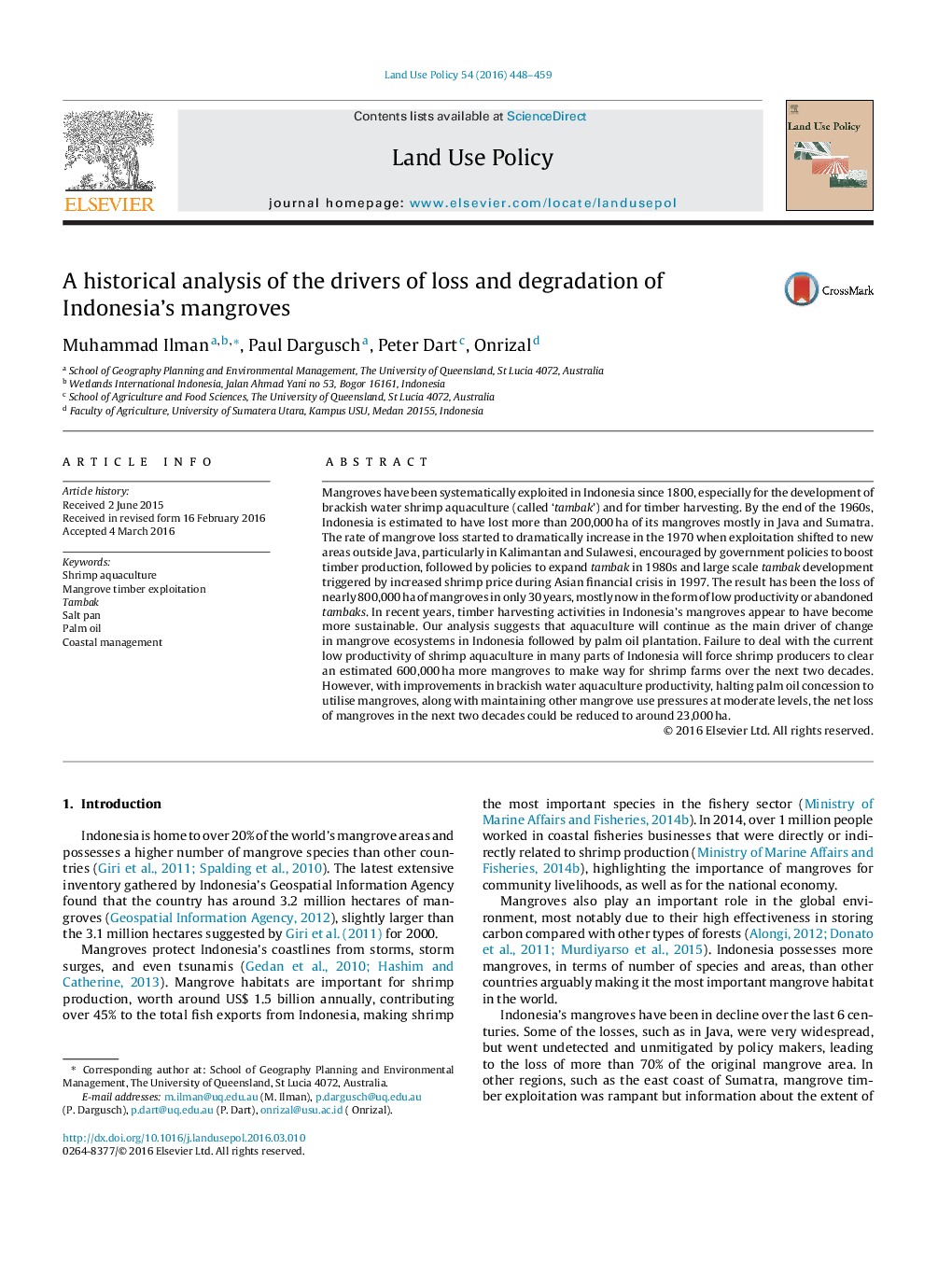| Article ID | Journal | Published Year | Pages | File Type |
|---|---|---|---|---|
| 6547382 | Land Use Policy | 2016 | 12 Pages |
Abstract
Mangroves have been systematically exploited in Indonesia since 1800, especially for the development of brackish water shrimp aquaculture (called 'tambak') and for timber harvesting. By the end of the 1960s, Indonesia is estimated to have lost more than 200,000Â ha of its mangroves mostly in Java and Sumatra. The rate of mangrove loss started to dramatically increase in the 1970 when exploitation shifted to new areas outside Java, particularly in Kalimantan and Sulawesi, encouraged by government policies to boost timber production, followed by policies to expand tambak in 1980s and large scale tambak development triggered by increased shrimp price during Asian financial crisis in 1997. The result has been the loss of nearly 800,000Â ha of mangroves in only 30 years, mostly now in the form of low productivity or abandoned tambaks. In recent years, timber harvesting activities in Indonesia's mangroves appear to have become more sustainable. Our analysis suggests that aquaculture will continue as the main driver of change in mangrove ecosystems in Indonesia followed by palm oil plantation. Failure to deal with the current low productivity of shrimp aquaculture in many parts of Indonesia will force shrimp producers to clear an estimated 600,000Â ha more mangroves to make way for shrimp farms over the next two decades. However, with improvements in brackish water aquaculture productivity, halting palm oil concession to utilise mangroves, along with maintaining other mangrove use pressures at moderate levels, the net loss of mangroves in the next two decades could be reduced to around 23,000Â ha.
Related Topics
Life Sciences
Agricultural and Biological Sciences
Forestry
Authors
Muhammad Ilman, Paul Dargusch, Peter Dart, Onrizal Onrizal,
